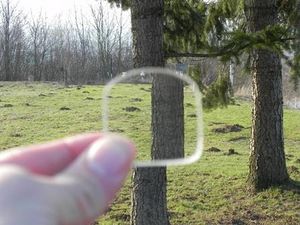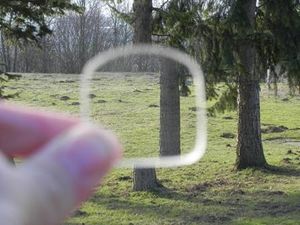Wedge prism
From AWF-Wiki
(Difference between revisions)
(→General description) |
(→General description) |
||
| Line 2: | Line 2: | ||
==General description== | ==General description== | ||
| − | The wedge prism is a small honed glass plate that is used to make an [[Bitterlich sampling|angle count sample]]. You can estimate [[basal area]] with | + | The wedge prism is a small honed glass plate that is used to make an [[Bitterlich sampling|angle count sample]]. You can estimate [[basal area]] with [[Bitterlich_sampling#Choice_of_basal_area_factor|basal area factors]] of ½, 1, 2 or 4. Each prism has a constant factor. |
The observer can do an [[Bitterlich sampling|angle count sample]] moving around the prism – while the prism is located at the sample point. | The observer can do an [[Bitterlich sampling|angle count sample]] moving around the prism – while the prism is located at the sample point. | ||
Revision as of 11:29, 13 July 2012
| sorry: |
This section is still under construction! This article was last modified on 07/13/2012. If you have comments please use the Discussion page or contribute to the article! |
Contents |
General description
The wedge prism is a small honed glass plate that is used to make an angle count sample. You can estimate basal area with basal area factors of ½, 1, 2 or 4. Each prism has a constant factor. The observer can do an angle count sample moving around the prism – while the prism is located at the sample point.
Handling
- Select the point for angle count sample,
- Select starting point (tree) for the sample,
- Move around the prism in a 360° sweep and count the trees included in the sample till starting point is reached,
- Multiply the counted number with the respective basal area factor of the prism (the result is an estimate of basal area in m² per ha)
| Advantages | Disadvantages |
|---|---|
| independence of power sources (no batteries needed) | no digital storage of measurement results available. |

